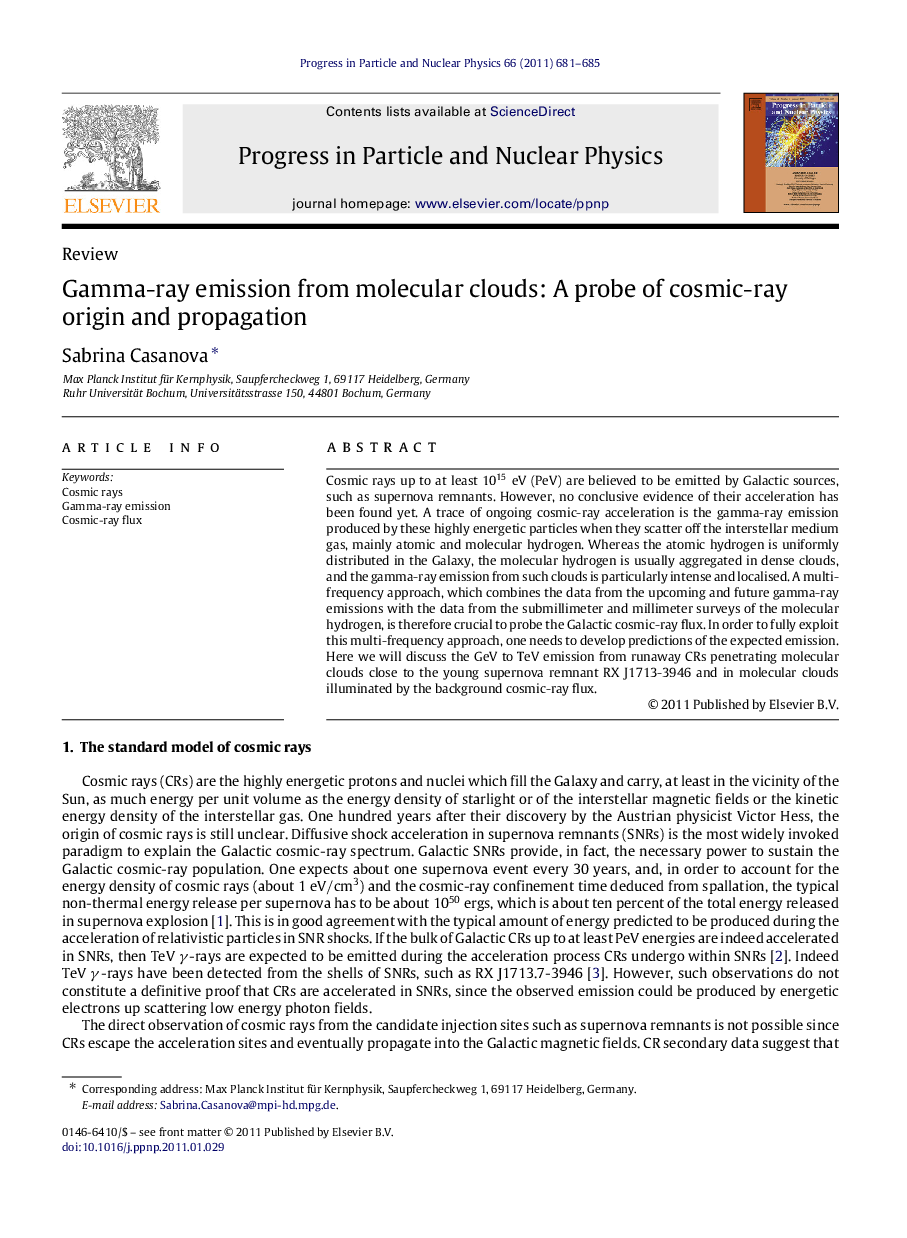| Article ID | Journal | Published Year | Pages | File Type |
|---|---|---|---|---|
| 1854473 | Progress in Particle and Nuclear Physics | 2011 | 5 Pages |
Cosmic rays up to at least 1015 eV (PeV) are believed to be emitted by Galactic sources, such as supernova remnants. However, no conclusive evidence of their acceleration has been found yet. A trace of ongoing cosmic-ray acceleration is the gamma-ray emission produced by these highly energetic particles when they scatter off the interstellar medium gas, mainly atomic and molecular hydrogen. Whereas the atomic hydrogen is uniformly distributed in the Galaxy, the molecular hydrogen is usually aggregated in dense clouds, and the gamma-ray emission from such clouds is particularly intense and localised. A multi-frequency approach, which combines the data from the upcoming and future gamma-ray emissions with the data from the submillimeter and millimeter surveys of the molecular hydrogen, is therefore crucial to probe the Galactic cosmic-ray flux. In order to fully exploit this multi-frequency approach, one needs to develop predictions of the expected emission. Here we will discuss the GeV to TeV emission from runaway CRs penetrating molecular clouds close to the young supernova remnant RX J1713-3946 and in molecular clouds illuminated by the background cosmic-ray flux.
